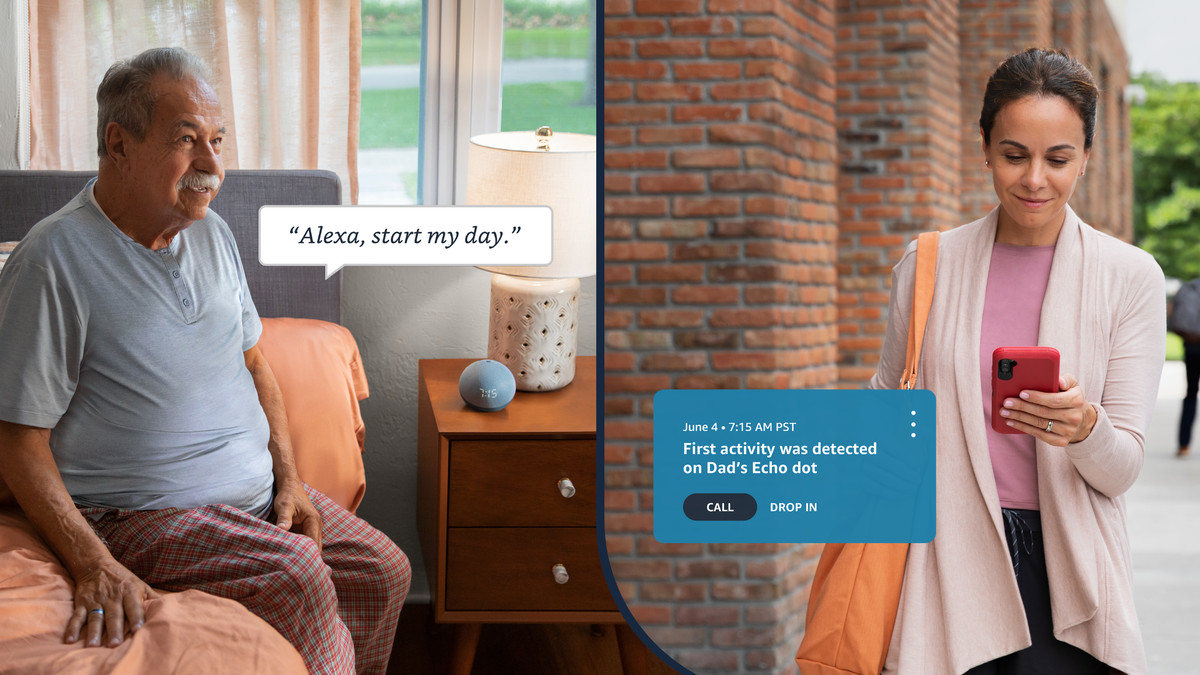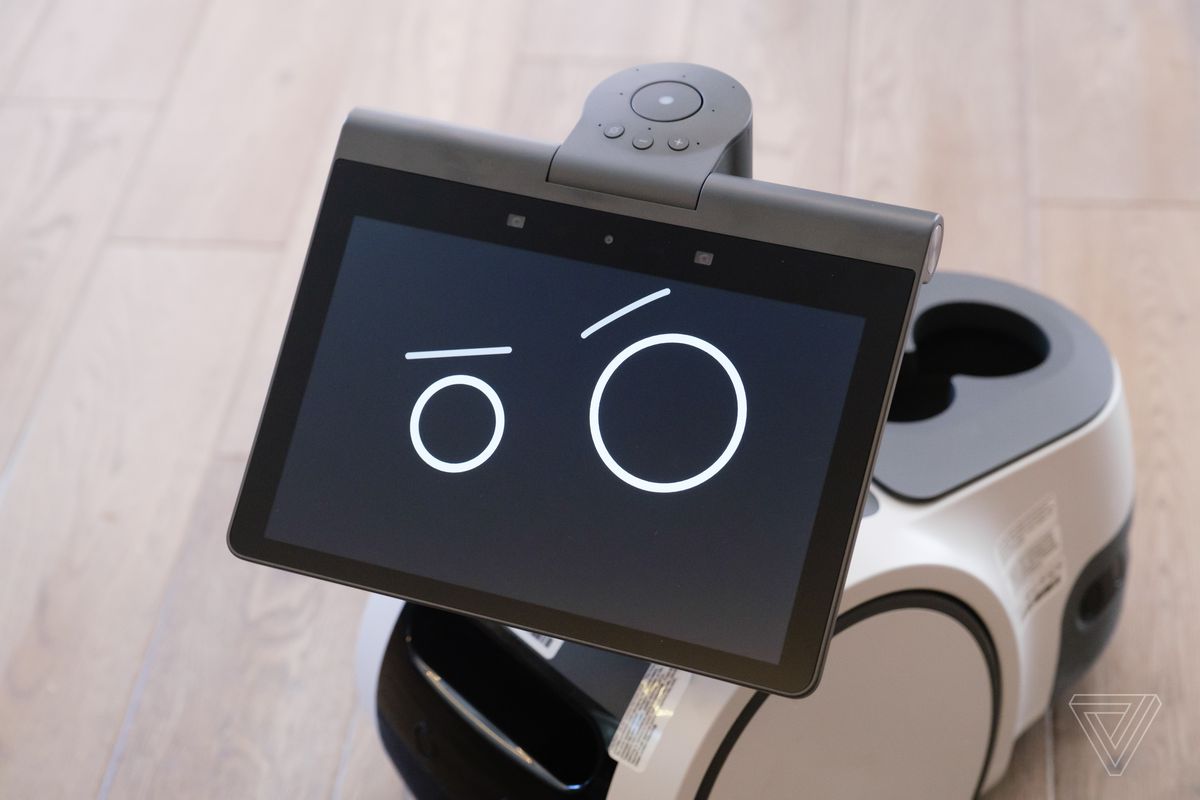First announced at Amazon’s fall hardware event, Alexa Together is officially launching today, Tuesday, December 7th. A new subscription service that expands on the existing Alexa Care Hub, Alexa Together is designed to offer a minimally invasive way to use Amazon’s voice assistant and associated Echo speakers to both assist and keep tabs on an elderly loved one or other person who requires a caregiver.
Almost since Alexa launched, industrious families have found ways to make the artificially intelligent assistant help them when it comes to looking after a remote loved one. Electronically “dropping in” on an elderly family member to check on them and sharing Alexa accounts so that they can see their activity have been simple — if inelegant — ways to know that your family member is okay; especially helpful if they aren’t always good at answering a phone call. But the system wasn’t designed for that use case, making it somewhat invasive for the person who’s being “monitored.”
First with Care Hub and now with Alexa Together, Amazon has developed new features based on how its customers shoe-horned the Alexa assistant into these use cases. The result is a product that could make the process of remotely caring for an elderly loved one easier and ultimately more helpful.

The new service costs $19.99 a month or $199 per year, and it replaces the existing — free — Care Hub service. For that new fee, customers get a professional monitoring service and some more proactive features. There is a six-month free trial available and all Care Hub customers get a free year of Alexa Together.
The two most notable features arriving with Alexa Together are Urgent Response and a fall detection capability. This adds 24/7 hands-free access to a professional emergency helpline, allowing the user to say “Alexa, call for help,” to an Echo speaker and be connected with an agent. The agent can then request the dispatch of police, the fire department, or an ambulance, and Alexa also sends a notification to the designated caregiver.
Fall detection requires third-party hardware — currently it works with devices from Assistive Technology Services (ATS) and Vayyar. Vayyar Care costs $250 and is a wall-mounted device from the makers of Vayyar Home. It’s exclusively for Alexa Together (although Vayyar makes a standalone product, too) and uses sensors and radio waves to detect falls. ATS’s SkyAngelCare is a fall-detection pendant that communicates over Wi-Fi to Alexa.
Both devices can be set to alert Alexa to ask the user if they want to call Urgent Response, a more proactive approach than waiting for the user to ask for help. Unlike similar devices on the market today, there are no ongoing subscription fees to use these, beyond the Alexa Together fee.
The activity feed and alerts from Care Hub are now part of Alexa Together. This lets a caregiver know that the person is up and going about their day by providing an alert in the Alexa app once the person being monitored first interacts with Alexa. It works with other Alexa-compatible smart home devices to register activity, too, including smart lights, thermostats, and motion sensors.
This is a more privacy-conscious way of monitoring someone, without using intrusive technologies, such as cameras, and without revealing exactly what they are doing. For example, the caregiver can see there was an interaction but not what it was specifically. Another feature is that Alexa Together can alert a caregiver if there has been no activity by a certain time, so they can know to check in.
A new Remote Assist option is also part of Alexa Together. This allows a caregiver access to a person’s Alexa account, with their permission, so they can help set up features remotely — such as setting reminders, adding contacts to be able to call or message with their voice, putting items on a shopping list, and linking music and video services. Finally, the ability to add multiple caregivers, which is coming early next year, is also a new option.
Amazon is clearly making a big play for the aging in place market. Aging in place is defined by the CDC as “The ability to live in one’s own home and community safely, independently, and comfortably, regardless of age, income, or ability level.” This is something the smart home is a natural ally in, and a number of other Amazon products announced at the same event earlier this year have the potential to help with this in different ways.
The Ring Alarm Pro, which combines a home security system and an Eero mesh Wi-Fi system in one, could make it easier to set up a smart home in a relative’s house with just one device. Experts in this space cite a security system with fire, smoke, and water leak monitoring capabilities as the most important tool to install in an elderly loved one’s home. And of course, for modern-day security systems, a strong internet connection is essential.
Sidewalk, Amazon’s little talked about (at least recently) “neighborhood network,” has two new partnerships with CareBand and Life360, both of which make products designed to know exactly where your loved ones are. Amazon announced both companies are producing devices that will be Sidewalk-enabled.
The new Amazon Glow device — an interactive projector that lets loved ones play games and read books with children remotely — is designed for grandparents to stay connected with their grandchildren. Voice assistants in general are helpful allies in combatting loneliness, which is associated with higher mortality rates in the elderly.

Finally, even Astro, Amazon’s rolling robot, was promoted at the event as potentially being able to deliver a blood pressure cuff to a person at regular intervals. While the robot may seem like a bit of a pointless novelty at this stage, use cases for elder care are probably the most compelling (if not fully realized).
Among the larger tech companies, Amazon is leading the way here, but it’s not the first to try. Best Buy launched Assured Living in 2017, offering a complete hardware and software solution for monitoring loved ones. It’s since disappeared and Best Buy now promotes various gadgets sold at its stores that help with “active aging.”
There are many standalone devices that have attempted to make an impact on the age-tech space. The LifePod is a proactive Alexa-based voice-enabled speaker that does a lot of what Alexa Together offers. The GrandPad is a simplified tablet designed to make technologies like video calling easier for seniors. There are also a plethora of tools for managing medications, gadgets that can help with cooking safely, and devices that help you stay in touch with the outside world.
To date, however, smart home tech has largely failed to capture this market. Possibly due to the piecemeal approach, likely due to the high costs of these gadgets and doubts around their long-term staying power, and definitely because of the privacy concerns of the elderly customer. Any device seen as spying on someone — whether it’s with a camera or not — has a large hurdle to overcome.
But this is a real problem and a major moment for the smart home. The number of Americans over 65 will double from around 50 million to nearly 100 million by 2060. By 2034, seniors will outnumber children. Most people would prefer to stay in their homes as they age rather than spend their life savings on assisted living facilities or nursing homes. Add to that the fact that there are over 53 million unpaid caregivers dedicating a large portion of their lives to caring for elderly relatives, and the math here just makes sense.
Equipping an entire home with smart devices enabled by artificial intelligence, both from Amazon and others, can cost less than one year of in-home care or one month in a care home. Combined with significant advances in telehealth during the COVID-19 pandemic, the smart home could become a crucial part of how we look after our elderly loved ones today and, one day, ourselves.

